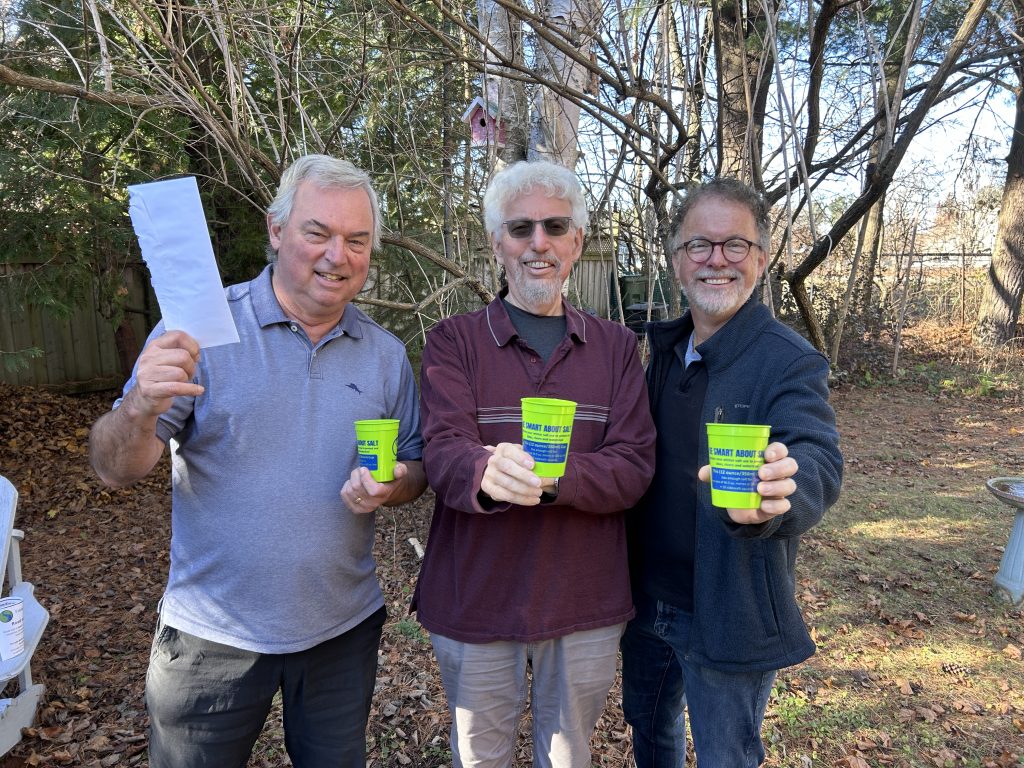Increasing road salt usage has Friends of the Muskoka Watershed (FOTMW) concerned about the damage caused to area lakes.
FOTMW has been awarded an EcoAction program grant from The Canadian Water Agency to
support their work finding ways to reduce the excessive use of road salt, and to educate the public about road salt risks. “This is a critical issue that’s getting worse. This grant will help,” says FOTMW chair Lenore Inniss.
“We will also need community financial support to take this project to the next level.”
Excessive road salt use is contaminating Muskoka’s lakes to the point where aquatic life is
negatively impacted. One result is the decreasing population of the small creatures that eat the algae in the lakes. This could result in more algal blooms.
“Our goal is to engage the Muskoka community (urban and lakeshore residents, schools, and commercial property owners) to reduce the use of road salt on residential properties, sidewalks and parking lots,” explains FOTMW director Dr. Norman Yan. Studies show that most people are using five to 10 times more road salt than required.
While this $74,000 grant is great news, a requirement of the grant is FOTMW must match the funds. “We need our donors and members to help us fundraise this amount so we can carry out the work to help protect our watershed,” says Inniss.
It’s estimated that about 20 percent of the road salt used in Muskoka is applied to parking lots, driveways and sidewalks. That 20 percent is the focus of this grant. The program is officially called Promoting Freshwater Health in Muskoka: Community-Led Reductions in Road Salt Usage, or SALTYMuskoka for short.
The SALTYMuskoka project will help schools, businesses, lake associations and individual
community members record salt levels and participate in road salt reduction education.
How bad is the salt problem?
Levels of most pollutants, such as nitrogen, phosphorous, acidity and metals have either stabilized or fallen in Muskoka lakes. But road salt levels have increased in lakes with developed watersheds and will likely worsen with continued population growth and climate change unless action is taken.
• Twenty percent of our lakes have chloride levels (from road salt) high enough to cause
damage. The affected lakes are found across the developed parts of Muskoka.
• Rising chloride levels in lakes across the watershed indicate inadequate management of
the issue. It’s a problem that needs focus.
• Road salt changes the chemistry of the water, threatening the life in our lakes. It can even
change the physics of lakes, altering the critical mixing in the spring that replenishes lake
oxygen lost under winter ice cover.
• 30,000 tons of salt enter Lake Muskoka every year, and chloride levels in most developed
lakes have increased roughly 20-fold. In Muskoka Bay, chloride levels are now high enough
to threaten lake life.
• Individuals can make a difference. They can reduce or even stop using salt on their own
property. Individuals can help document and track the issue by recording salt usage in their
community. Individuals can educate and influence others about road salt.
Visit this report on our website to learn more about the road salt threat: https://fotmw.org/fomw publications/the-road-salt-threat-to-muskoka-lakes-answering-10-key-environmental-questions/
Please email friends@fotmw.org if you’d like to get involved.
We appreciate all membership https://fotmw.org/Membership/
Donations to help with our SALTYMuskoka program can be made at https://fotmw.org/Donate/
